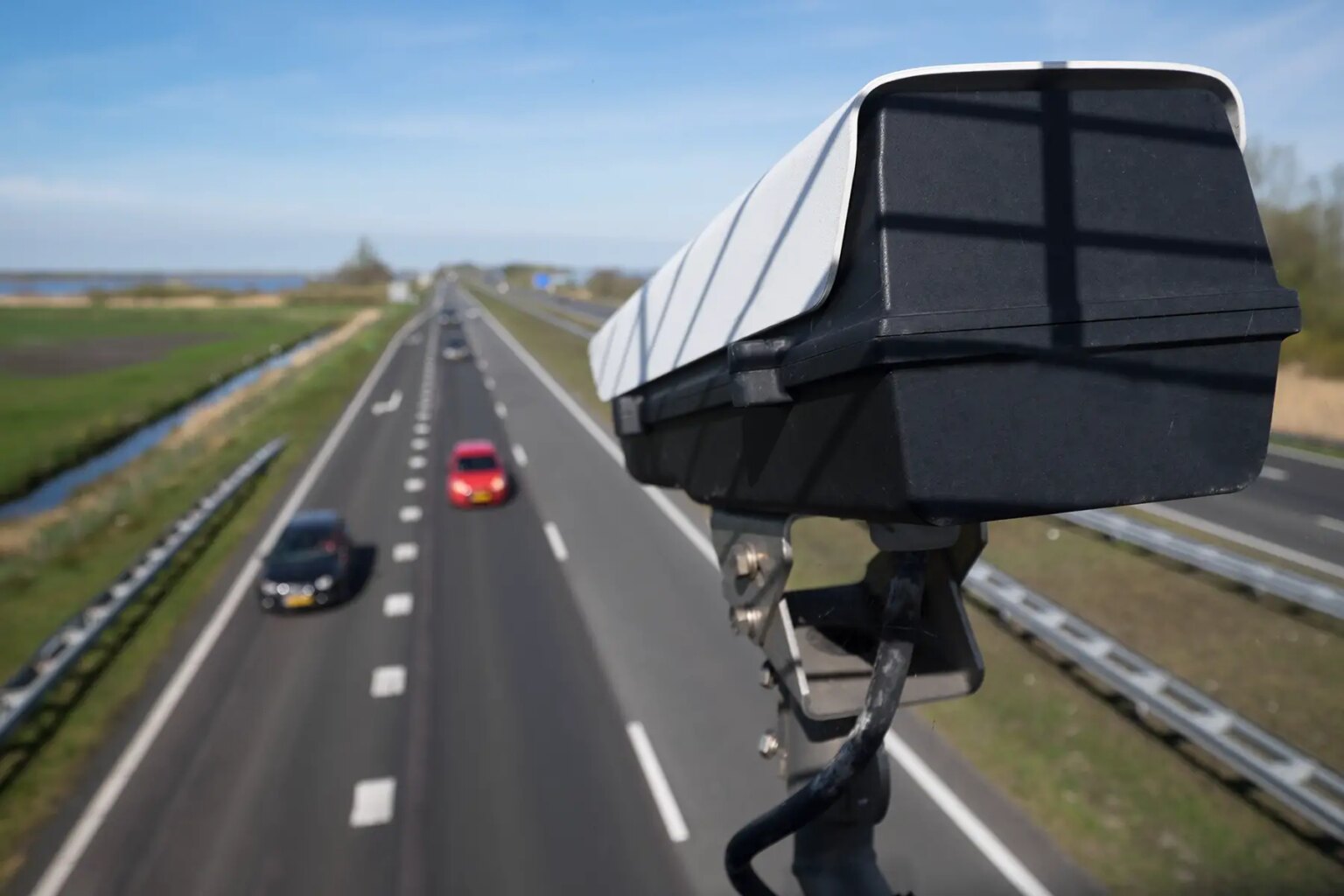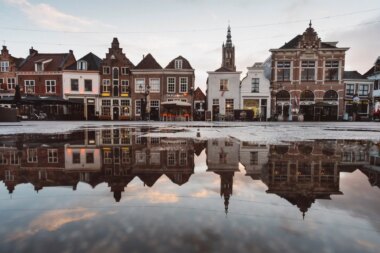Some of the biggest and best inventions have come from tiny Netherlands. Though the Netherlands sits in a small corner in the world, Dutch inventions had a huge impact on history. No matter where you’re from, chances are you’ve used a Dutch invention during your lifetime. If windmills pop to your mind as the best invention from the Netherlands, you would be mistaken (think Persians or Chinese).
Yet the Dutch have been a nation of inventors since using windmills to create farmland from marshes more than 800 years ago. Dutch artists also left their mark, not least during the Dutch Golden Age of painting with works by Rembrandt, Vermeer, Jan de Bray and Dirck Hals.
The following list includes some of the best inventions to come from the Netherlands. There’s also a few Dutch inventions you didn’t realize came from Dutch inventors.
Storm proof umbrella
Starting with a modern invention, Dutch weather provided the perfect base for testing Gerwin Hoogendoorn’s storm-proof umbrella. In 2005, this Dutch industrial design student invented an umbrella with a similar shape to a stealth plane. This was aerodynamically streamlined to withstand wind force 10 (up to 100 km/h or 70 mp/h) without turning inside-out, alongside ‘eyesavers’ to protect accidentally wounding others with the tips. Hoogendoorn’s storm umbrella has won several design awards.
Brandy
This Dutch invention was reportedly the result of an experiment of a 16th-century Dutch shipmaster. In his attempt to make wine easier to transport, he heated the wine with the idea to create a concentrate which could later be diluted with water. His potent new drink was so popular, he declared it a drink known as burnt wine (brandewijn in Dutch).
The telescope
A year before Galileo first gazed at the stars with his telescope, spectacle-craftsmen Zacharias Jannsen and Hans Lipperhey developed simple spyglasses made from tubes with one biconvex and biconcave lens.
The first person to apply for a telescope patent was Hans Lippershey in 1608. However, it is disputed whether the idea originated with Zacharias Janssen, who lived in the same town also working on optical instruments. Adding to the influx of inventions, a third Dutchman, Jacob Metius, also created a telescope that he tried to patent several weeks after Lippershey.
The microscope
Who really invented the microscope? The microscope was invented in Middelburg in the Netherlands around the 16th or 17th century, but credit is in dispute. It is thought a simple version of the microscope was created by Zacharias and Hans Janssen in the mid-1500s, around the same as spectacle maker Hans Lippershey. However, it is Anton van Leeuwenhoek that is more commonly known for his invention in the 1670s. Van Leeuwenhoek’s microscope used a magnifying glass with one lens that could magnify more than 200x real size; that was far ahead of the pre-existing 30x magnification. Leeuwenhoek was also the first person to observe single-cell organisms.
The submarine
The first design of a submarine was the genius of British William Bourne. It was Dutch physicist Cornelis Drebbel who constructed the first moveable underwater vessel in the 1620s while working for the English Royal Navy. The first functioning submarine had a wooden frame and only stretched greased leather to keep out the icy water, with tubes used for air and oars and flaps for momentum.
The Olympic flame
This tradition accidently became a Dutch invention when architect Jan Wils worked on the Olympic Stadium in Amsterdam in 1928. His design incorporated a tower emitting smoke, which would be seen better during the day. Fire subsequently became a part of Olympic traditions; in 1936, the first flame entered Berlin’s games with an athlete.
Eye tests
If you’ve ever had your eyes tested at an optometrist, you’ve likely used this Dutch invention. The eye-test chart, a sheet of large letters decreasing into fine print, is the Snellen chart, after Dutch inventor Herman Snellen who came up with the idea in 1862.
Speed cameras
Getting caught by a speed camera is not something everybody would thank Dutch inventors for. Perhaps ironically, it was Dutch rally driver Maus Gatsonides who thought up this Dutch invention, producing and selling the first automatic speedometers in 1958. Similar to today, speed was measured by a chronometer that was activated any time car tires hit the two rubber tubes laid across the road.
The dollar
While not an actual Dutch invention, the word dollar comes from the Dutch world daalder, perhaps not surprising considering the Dutch have traded with the US for more than 400 years. Daalder was used in the Low Countries to refer to coins minted in Dutch provinces from around the 1500s, which were later brought to America by migrants who settled ‘New Netherlands’ in the 17th Century. On that note, would New York also exist without the Dutch?
CDs and DVDs
Today’s technology conglomerate Phillips came from humble beginnings in the Netherlands, to help give the world cassette tapes, CDs, DVDs, and Blu-Ray. The compact disc, produced by Sony and Philips in Eindhoven, was the invention of Joop Sinjou and Kees Schouhamer Immink. They based the size of the CD holes on a Dutch 10-cent coin.
Bluetooth
This Dutch invention is attributed to Jaap Haartsen, who came up with the idea of Bluetooth while working at Ericsson. This invention has been built into billions of technical devices worldwide to enable connection with other wireless devices.
Big Brother
Reality television is popular today but it was ground-breaking at the time. Early examples of reality TV include the Dutch series Nummer 28 in 1991, bringing strangers together and recording their reactions, but the world starting to tune in with the rise of Survivor, Idol and Big Brother (brainchild of Dutchman John de Mol) in the late 1990s and 2000s. These shows have become global franschises, with local version sprouting all over the world.
Fire hose
The fire hose as we know it today was the invention of Dutch Jan van der Heyden in 1673. Combined with his subsequent invention of an advanced pumping system, large fires could effectively be extinguished.
Thermometer
Dutch meteorologists use celsius today. However, the alcohol and mercury thermometer is an invention from Polish-born Dutchman Daniel Fahrenheit in the early 1700s. Fahrenheit was also the first person to officially record the temperatures at which water freezes and boils.
Bike treadmill
You might not commonly see this modern invention on the street but the hybrid bike-treadmill was the inspiration of Dutch entrepreneur Bruin Mergmeester. With his cross trainer as the muse, Mergmeester created an electric bicycle powered by a mini treadmill that sits low between the wheels. This ‘Lopifit’ can reach up to 25km per hour.
Folding emergency bridge
It was a Dutch, Mr Deth, who invented a BYO bridge. As a practical solution to crossing the Netherlands’ many canals, Deth invented an emergency bridge that could fold.
Miffy
The little white female rabbit, Miffy (Nijntje in Dutch), and around 30 of her adventures have sold more than 85 million copies worldwide. There’s also a television series, a movie and clothes, toys, and other merchandise. The series of Nijntje picture books started when Dutch artist Dick Bruna told his son stories about a rabbit they saw on holiday. Nijntje is a shortened version of the diminutive konijntje, little rabbit.
TomTom
The pioneers of GPS mapping started more than 20 years ago with Dutch company TomTom. In 2004, they created a new consumer electronics category when they released the first personal navigation device. They’ve since sold more than 70 million PND devices worldwide. Today GPS mapping has become the norm in apps used by smartphone users around the world.
Stable doors
Is there such a thing as a Dutch door? This Dutch invention refers to doors that open in two parts, more commonly seen in stable doors. These were popular in the Netherlands in the 17th century and are still popular around the world today. The ingenious idea allowed light and air through the top open half, while animals could be kept out with the closed bottom half.







